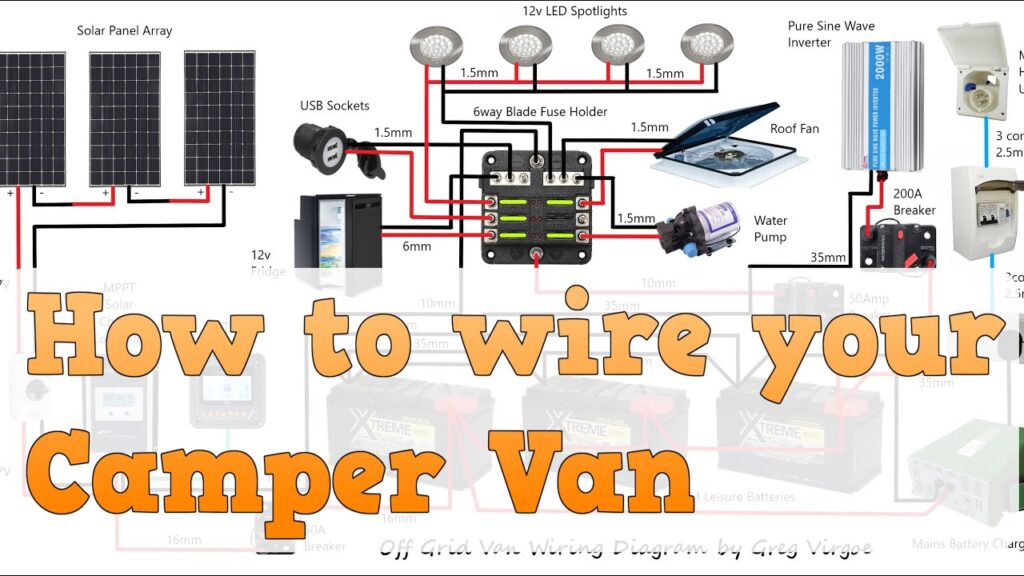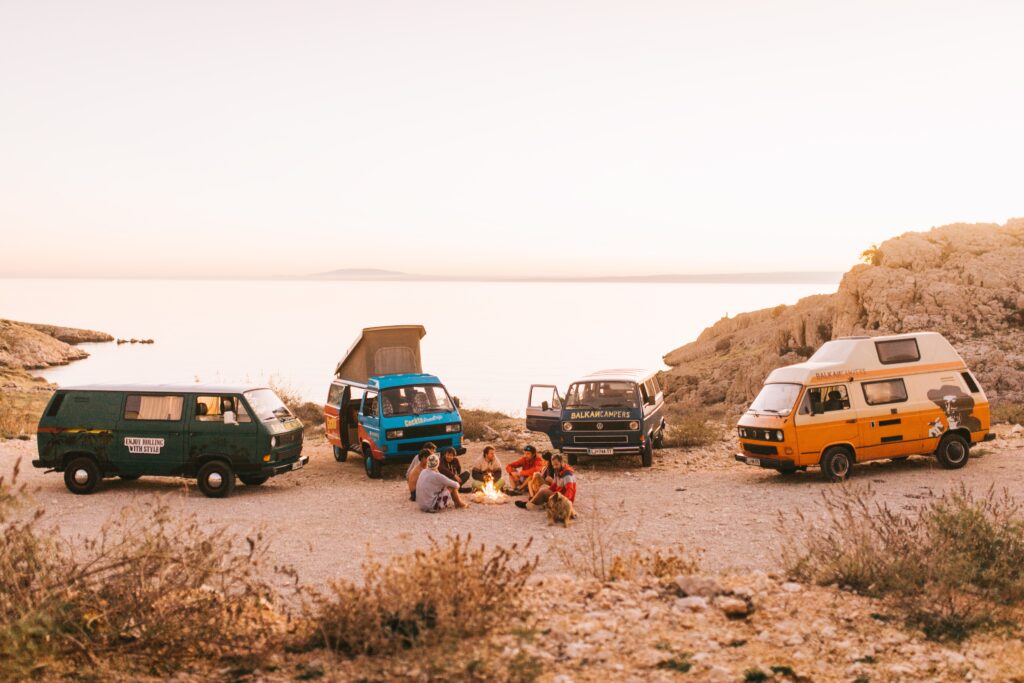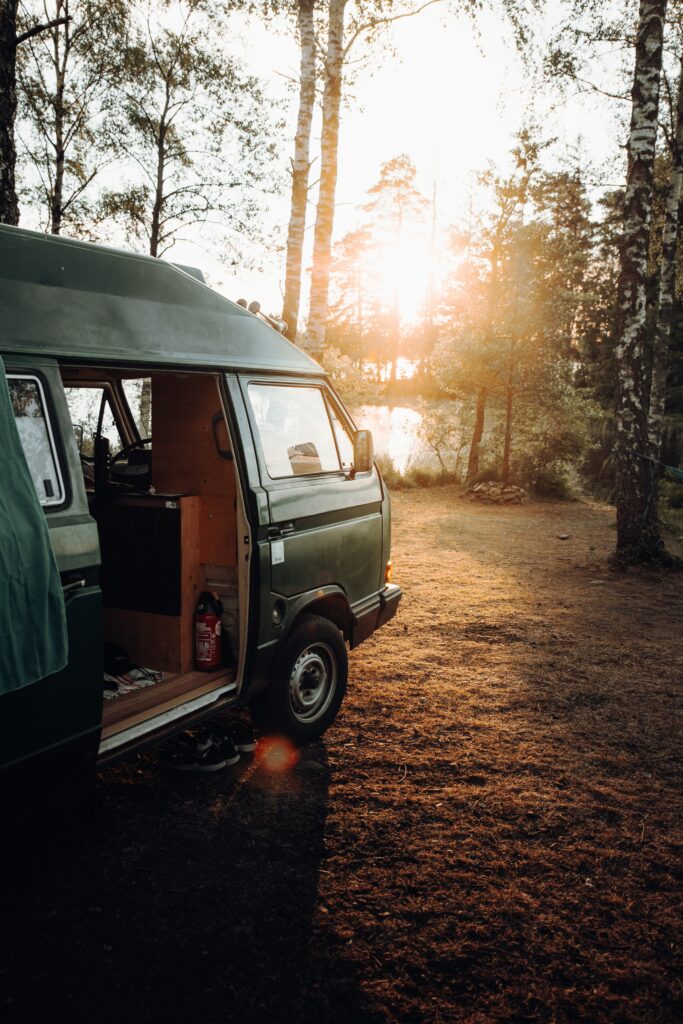
In my article, “How to Wire Your Camper Van for Off-Grid Living,” I will be discussing a video by Greg Virgoe that provides detailed instructions on how to wire your camper van to function off the grid. The video focuses on wiring diagrams and parts lists for various off-grid van systems, including configurations with different numbers of solar panels, MPPT charge controllers, leisure batteries, and inverters. Viewers will have the opportunity to download the wiring diagrams and parts list for free. The video concludes with a message of gratitude to the viewers and wishes them success with their own camper van builds.
In this article, I aim to enlighten readers on the benefits of wiring their campervans for off-grid living. I will provide a summary of the content covered in Greg Virgoe’s video, emphasizing the use of solar panels for generating electricity and the cost-effectiveness of avoiding electric hookups. Additionally, I will explain the importance of sizing solar panels appropriately and utilizing MPPT charge controllers for efficient energy utilization. I will also delve into the topic of leisure batteries for storing generated power, discussing different battery options and how to connect and wire them. Lastly, I will touch on the use of inverters for appliances requiring AC power, as well as provide simplified wiring diagrams and a PDF guide for download.
Introduction
Living off-grid in a camper van has become an increasingly popular lifestyle choice for many individuals seeking a simpler way of life, and it offers a range of benefits that are hard to ignore. From cost savings to flexibility and freedom, as well as the positive impact on the environment, off-grid living in a camper van can be a truly rewarding experience. In this article, I will delve into the various aspects of off-grid living in a camper van, including choosing solar panels, utilizing an MPPT charge controller, selecting and wiring leisure batteries, having a backup charging facility, wiring appliances for 12-volt DC power, installing an inverter for 230-volt AC power, and provide a simplified wiring diagram and parts list for reference.
Benefits of Off-Grid Living in a Camper Van
Cost savings
One of the primary benefits of off-grid living in a camper van is the significant cost savings it offers. By relying on solar panels for electricity and utilizing leisure batteries, you can drastically reduce or eliminate the need for costly utility bills. Additionally, living in a camper van means lower monthly expenses compared to traditional housing, including lower rent or mortgage payments, reduced maintenance and repair costs, and decreased insurance expenses. Overall, living off-grid in a camper van provides a more affordable lifestyle option.
Flexibility and freedom
Living off-grid in a camper van offers unparalleled flexibility and freedom. You have the ability to travel and explore new places at your own pace, without being tied down to a particular location. With a camper van, you can change your scenery whenever you desire and experience the joy of waking up to breathtaking views. Furthermore, off-grid living allows you to escape the hustle and bustle of daily life, providing you with peace and tranquility.
Environmental sustainability
Another significant advantage of off-grid living in a camper van is the positive impact it has on the environment. By relying on solar panels and clean, renewable energy sources, you reduce your carbon footprint and help preserve the planet for future generations. Off-grid living also encourages minimalism and a more sustainable approach to consumption by promoting a simpler and more mindful way of life. By embracing off-grid living, you become a steward of the environment and contribute to the global effort towards a greener future.

Choosing Solar Panels for Your Campervan
Sizing the solar panels
When choosing solar panels for your campervan, it is crucial to consider the power requirements of your appliances and electronics. Calculate the wattage of each device and total them up to determine the minimum wattage capacity your solar panels need to produce. It is recommended to have an extra 20% capacity to account for inefficiencies and unexpected power needs. Additionally, consider the physical dimensions of your campervan’s roof or any other location where the solar panels will be mounted to ensure they fit properly.
Types of solar panels
There are several types of solar panels available for campervans, including monocrystalline, polycrystalline, and thin-film panels. Monocrystalline panels are known for their high efficiency and sleek appearance, while polycrystalline panels offer a more cost-effective option with slightly lower efficiency. Thin-film panels are flexible and lightweight, making them suitable for curved surfaces or installations where weight is a concern. Choose the type that best suits your needs and budget.
Mounting and installation
Proper mounting and installation of solar panels are crucial for optimal performance and longevity. Ensure that the mounting brackets or racks are securely attached to your campervan’s roof or desired location, following the manufacturer’s instructions. It is essential to position the panels to receive maximum sunlight exposure throughout the day. Use proper sealing techniques to prevent water leakage and protect the integrity of your campervan. Consider consulting a professional or seeking advice from experienced individuals if you are unsure about the installation process.
Utilizing an MPPT Charge Controller
What is an MPPT charge controller?
An MPPT (Maximum Power Point Tracking) charge controller is an essential component of a solar power system for a campervan. It regulates the charging process from the solar panels to the leisure batteries, maximizing the energy output and efficiency. The MPPT charge controller continually adjusts the voltage and current to ensure the batteries receive the optimal charge, regardless of changes in sunlight intensity or temperature.
Benefits of using an MPPT charge controller
Using an MPPT charge controller offers several benefits. Firstly, it enhances the charging efficiency by up to 30% compared to traditional PWM (Pulse Width Modulation) charge controllers, resulting in faster charging times and increased energy production. Secondly, an MPPT charge controller provides the ability to use higher voltage solar panels, allowing for longer cable runs and reducing energy losses. Lastly, it provides advanced features such as data monitoring and programmable settings, enabling you to track your energy usage and customize the charging process.
Installation and connection
The installation and connection of an MPPT charge controller are relatively straightforward. Mount the charge controller in a suitable location within your campervan, ensuring proper ventilation to dissipate heat. Connect the solar panel array to the charge controller’s solar input terminals, following the polarity markings. Then, connect the leisure battery bank to the charge controller’s battery terminals, again ensuring correct polarity. Lastly, connect any optional accessories, such as a battery temperature sensor or remote display, following the manufacturer’s instructions.

Selecting and Wiring Leisure Batteries
Types of leisure batteries
Choosing the right leisure batteries is essential for powering your campervan’s electrical system efficiently. There are three main types of leisure batteries: flooded lead-acid, absorbed glass mat (AGM), and lithium-ion. Flooded lead-acid batteries are the most common and cost-effective option but require regular maintenance. AGM batteries are maintenance-free and provide better deep cycling capabilities. Lithium-ion batteries offer superior performance, longer lifespan, and greater energy density, but they come at a higher cost.
Calculating the battery capacity
To determine the battery capacity needed for your campervan, calculate the energy consumption of your appliances and electronics. Convert this energy consumption from watts to ampere-hours (Ah) by dividing by the system voltage (usually 12 volts). Consider your expected usage pattern, the number of days without charging, and the desired battery discharge level. It is advisable to choose a battery bank with a capacity that allows for a comfortable margin to avoid excessive discharge and premature battery failure.
Wiring the batteries in parallel or series
When wiring leisure batteries in your campervan, you have the option to connect them in parallel or series. Parallel wiring involves connecting positive terminals to positive terminals and negative terminals to negative terminals. This configuration increases the overall capacity (Ah) while maintaining the system voltage (e.g., 12 volts). Series wiring involves connecting positive terminals to negative terminals, resulting in an increased system voltage (e.g., 24 volts) while maintaining the overall capacity. The choice between parallel and series wiring depends on your specific needs and the electrical system requirements of your campervan.
Backup Charging Facility
Using a mains battery charger
Having a backup charging facility is essential to ensure reliable power availability even in situations where solar energy might be insufficient. A mains battery charger allows you to charge your leisure batteries using grid power or a generator when necessary. Invest in a high-quality charger that is compatible with your battery type and has a suitable charging capacity. Ensure that the charger is safely and adequately connected to your camper van’s electrical system, following the manufacturer’s instructions and local regulations.
Installation and connection
To install a mains battery charger, choose a location within your campervan that allows for proper ventilation and easy access. Connect the charger to a dedicated AC power source, such as a shore power connection or a suitable generator. Follow the manufacturer’s instructions to ensure the correct wiring and connection procedures. Additionally, consider installing a battery isolator switch or breaker to disconnect the charger when it is not in use or during maintenance.

Wiring Appliances for 12-Volt DC Power
Choosing 12-volt appliances
When outfitting your campervan with appliances, opt for those designed to operate on 12-volt DC power. 12-volt appliances are specifically designed for the low voltage output of leisure batteries and are more energy-efficient compared to their 230-volt AC counterparts. Examples of 12-volt appliances include refrigerators, lighting fixtures, water pumps, and ventilation fans. Choose appliances with a power rating that aligns with your campervan’s electrical capacity and consider energy-saving features for maximum efficiency.
Wiring using blade fuse holders
To safely wire your 12-volt appliances, use blade fuse holders for circuit protection. Start by identifying the appropriate positive and negative terminals on your leisure battery bank. Connect the positive terminal of each appliance to a fuse holder, ensuring the appropriate fuse rating is used to match the appliance’s power requirements. Connect the fuse holder to the positive terminal of the leisure battery, and connect the negative terminal of each appliance directly to the negative terminal of the leisure battery. Secure all connections properly and protect them from potential damage.
Safety precautions
When wiring appliances for 12-volt DC power, it is essential to adhere to safety precautions. Ensure that all wiring is properly sized, insulated, and secured to prevent short circuits, overheating, or electrical hazards. Regularly inspect and maintain the wiring to ensure its integrity and make any necessary repairs or replacements. Consider installing a master switch or breaker to disconnect the entire 12-volt DC system when needed, providing an additional layer of safety and convenience.
Installing an Inverter for 230-Volt AC Power
Understanding the need for an inverter
While most of your campervan’s electrical system operates on 12-volt DC power, you may still require 230-volt AC power for certain appliances or devices. An inverter converts the DC power from your leisure batteries into AC power, allowing you to use standard household appliances on the go. It is essential to choose the right type and capacity of the inverter based on your power requirements and the peak power ratings of the appliances you intend to use.
Types of inverters
There are two main types of inverters: pure sine wave and modified sine wave. Pure sine wave inverters produce a clean and stable AC power output similar to the electricity supplied by the grid, making them suitable for sensitive electronics and appliances. Modified sine wave inverters provide a less precise AC power output, which may cause compatibility issues with certain devices. Choose the type of inverter that best matches your requirements and ensures the safe and efficient operation of your appliances.
Wiring and installation details
Proper wiring and installation of an inverter are critical to its reliable and safe operation. Mount the inverter in a suitable location within your campervan, ensuring proper ventilation and easy access. Connect the positive and negative terminals of the inverter to the leisure battery bank using appropriately sized cables and connectors. Follow the manufacturer’s instructions for the recommended wiring configuration and safety guidelines. Additionally, consider installing a dedicated circuit breaker or fuse to protect the inverter and wiring from potential overloading or short circuits.

Wiring Diagram and Parts List
Simplified wiring diagram
A simplified wiring diagram provides a visual representation of the electrical connections in your campervan. It depicts the relationships between the solar panels, charge controller, leisure batteries, inverter, and appliances. The diagram helps you understand the overall wiring layout and facilitates troubleshooting and maintenance. Consult a professional or refer to reputable online resources to obtain a reliable and comprehensive wiring diagram that suits your specific campervan setup.
Downloadable PDF document
For your convenience, a downloadable PDF document containing a comprehensive parts list for your campervan’s electrical system is invaluable. The parts list includes all the necessary components, such as solar panels, charge controller, leisure batteries, inverter, wiring, connectors, fuses, and switches. It provides detailed specifications, quantities, and links to suppliers, allowing you to easily source the required parts and ensure compatibility. Use the parts list as a reference during the purchasing process and keep it as a handy resource for future reference or upgrades.
Conclusion
In conclusion, off-grid living in a camper van offers numerous benefits, including cost savings, flexibility and freedom, and environmental sustainability. By carefully selecting and installing the right components, such as solar panels, an MPPT charge controller, leisure batteries, a backup charging facility, 12-volt DC appliances, and an inverter, you can create a reliable and efficient electrical system for your campervan. Remember to consult professionals, adhere to safety guidelines, and conduct regular maintenance to ensure the longevity and optimal performance of your electrical system. Thank you for reading, and I encourage you to ask any questions or engage in further discussion on this topic.

